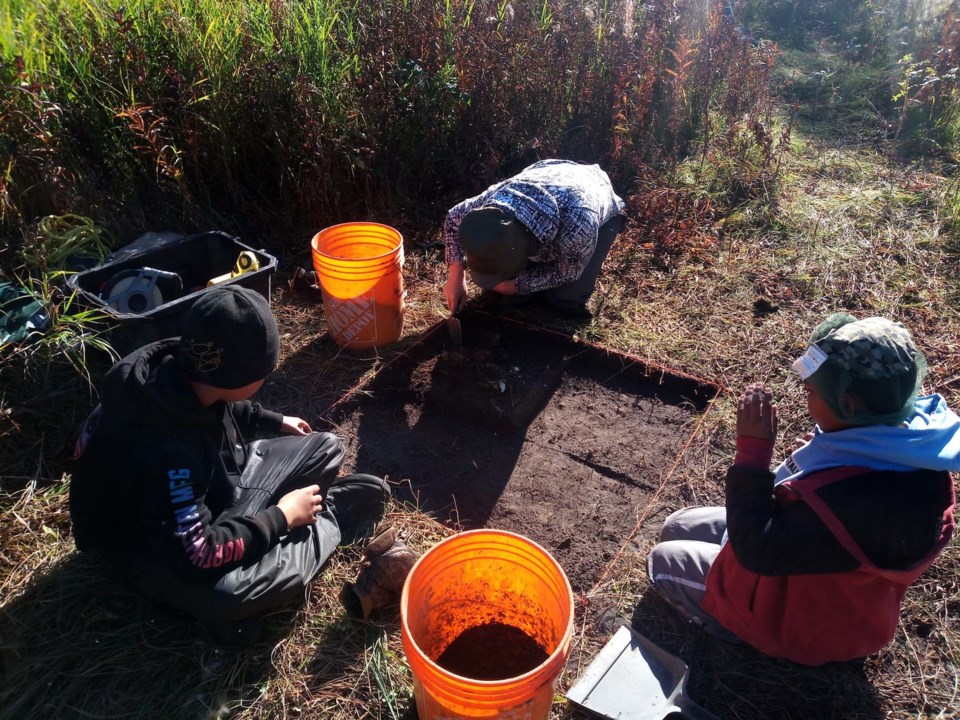An Alberta First Nation in the province's oilsands region is seeking more control over the traces left by ancestors on their traditional lands.
"We'd like to manage our historical resources," said Shaun Janvier of the Chipewyan Prairie First Nation, which considers a vast tract of land in northern Alberta its territory.
"The archeology is directly linked to the native people in the area. It belongs to us."
Chipewyan Prairie is one of the first bands in Alberta to begin developing a cultural resources policy in an attempt to have more say in how artifacts and the places they come from are found, studied, preserved and displayed.
It's a move that's long overdue, said Kisha Supernant, director of the Institute of Prairie and Indigenous Archaeology at the University of Alberta.
"It's been almost 50 years since (the rules) were established, and they haven't been fundamentally revised. We are at a point now where they're getting in the way of Indigenous rights."
In Alberta and most provinces companies may be required to conduct a historic resource assessment before working on an undeveloped site. Such requirements are common in the oilsands region, considered to have one of the highest densities of archeological sites in Canada.
In 2022, the province issued 209 permits for archeological investigations. Most were issued in advance of industrial development.
Consultants search for possible sites using modelling and past experience -- a sunny hillside overlooking a river or lake, for example, is a good place to look for ancient camps, kill sites or tool manufacturing.
Sometimes, consultation occurs.
But there are no legal requirements for industry to ask area First Nations about where to look. Sites are probably being missed and destroyed as a result, said Supernant.
"I do think that is a consequence."
If something is found, a government agency evaluates its importance, rules on to what extent (if any) it's excavated, and takes possession of the artifact.
Developers are required to contact government, but Supernant said enforcement is so lax that those laws are sometimes ignored.
"There's no motivation to report," she said. "I have heard, either from community members or from folks who have been involved in a project, that they were sometimes encouraged not to tell anyone if something is found because it was seen as a delay."
A 2021 study from the Archaeological Survey of Alberta estimated eight per cent of pre-contact sites in the oilsands area have been disturbed by activity that is "non-compliant" with legislation.
Industry is not obliged to contact First Nations if anything is found, although some companies do.
Nor is checking in with local First Nations during a dig required by law. Companies may hire local help, but that's not the same, said Ave Dersch, an archeologist who works with Chipewyan Prairie.
"(Local hires) don’t really have any authority and are just labour," she wrote in an email. "They may or may not have Indigenous knowledge about the site and may or may not choose to share it.
"Once the fieldwork is over, they are not included any further."
Finally, all artifacts automatically become property of the Crown and are sent to the Royal Alberta Museum in Edmonton.
"That's why we need to co-manage our historical resources," Janvier said. "They should actually consult with us."
As well, there's more to Indigenous archeology than pottery fragments and arrowheads. Sometimes, the place itself is the historic resource.
"That blueberry patch would have fed my grandfather and my grandfather's dad, through generation to generation," Janvier said. "Even though the reclaim part of (industry's) process says they're going to put the land back, it's never the original."
Garrett Koehler, spokesman for Alberta Arts, Culture and Status of Women, said the government is revamping how it manages historical resources in the province.
"Alberta’s government is currently in the process of creating a new framework for repatriating non-sacred objects to Indigenous communities through the Royal Alberta Museum," he said in an email. "(The) government has made information on archeological investigations and reports broadly available to Indigenous communities."
Alberta has about 40,000 archeological sites. Nobody expects them all to be fully excavated and communities may not want them to be.
"I would like to see greater emphasis on avoidance of sites -- shifting a pipeline a few metres so the site doesn't need to be excavated at all," said Supernant.
Janvier said the Chipewyan Prairie are just at the start of deciding how they want to have a hand in efforts to understand where and how their ancestors lived. The band is breaking new ground in asserting such control, he said.
But it's already begun. Band-run excavations at the Winefred Lake site on reserve lands have turned up artifacts such as the northernmost pre-contact pottery fragments ever found in Alberta, changing the narrative on the region's history.
"I'm proud to find that," said Janvier.
"It makes me feel connected. I know the stories are true."
This report by The Canadian Press was first published June 15, 2024.
Bob Weber, The Canadian Press



